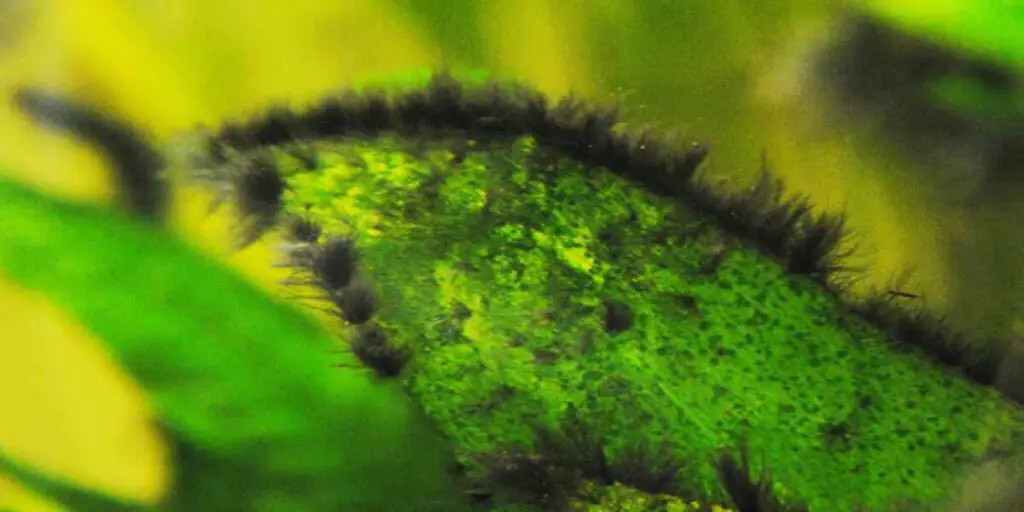How to effectively tackle black spots in fish tank. Our article offers practical solutions for a cleaner and healthier aquatic environment.

In this comprehensive guide, we’ll delve into the various causes of black spots in fish tanks, share effective strategies for their prevention, and discuss treatment options when necessary. We’ll also shed light on the signs and symptoms of black spot disease in fish, along with how to diagnose and address this condition.
Causes of Black Spots in Fish Tanks
The primary culprit behind black spots in fish tanks is often the growth of algae. Algae are microscopic plants that can thrive on various surfaces within your aquarium, including the glass, substrate, and decorations. Several factors contribute to algae growth, including poor water quality, overfeeding, and overstocking.
In addition to algae, black spots in fish tanks can also stem from:
1. Black Spot Disease in Fish: Black spot disease is a parasitic infection that manifests as black spots on the skin of fish. This condition is more commonly found in tropical fish and is caused by protozoan flagellates, microscopic parasites that infect the skin and scales of fish.
2. Fish Waste: Accumulated fish waste can break down and form black sediment on the aquarium’s bottom. This sediment may also give rise to black spots on the glass and other surfaces within the tank.
3. Food Particles: Leftover or uneaten food particles can undergo decomposition and contribute to the formation of black sediment on the aquarium’s substrate and surfaces.
Prevention of Black Spots in Fish Tanks
Preventing black spots in your fish tank begins with maintaining excellent water quality. Here are some crucial steps you can take:
1. Regular Water Changes: Implement a routine of regular water changes to reduce nutrient levels and remove waste. This practice helps maintain the water’s clarity and quality.
2. Quality Filtration: Ensure that your filtration system is efficient in removing debris and maintaining optimal water conditions. Clean or replace filter media as needed to keep it functioning effectively.
3. Adequate Lighting: Control the duration and intensity of lighting in your aquarium, as excessive light can promote algae growth. Consider using a timer to regulate the lighting schedule.
4. Controlled Feeding: Avoid overfeeding your fish, as excess food leads to nutrient buildup. Feed your fish only what they can consume within a few minutes, and promptly remove any uneaten food.
5. Algae-Eating Fish and Invertebrates: Introduce algae-eating species into your aquarium to help control algae growth. Popular choices include Siamese algae eaters, otocinclus catfish, and Amano shrimp.
6. Routine Cleaning: Regularly clean your aquarium by vacuuming the substrate, wiping down the glass, and removing debris. This practice prevents the accumulation of organic matter that fuels algae growth.
Treatment of Black Spots in Fish Tanks
If you discover black spots in your fish tank, the initial step is to identify the underlying cause. When algae are responsible for the spots, consider the following treatment measures:
1. Algae Removal: Manually remove visible algae using a soft brush or algae scraper. Be gentle to avoid damaging the glass or decorations.
2. Water Quality Improvement: Address the root cause of algae growth by maintaining proper water quality. Regular water changes and a well-functioning filter are essential components of this effort.
3. Adjust Lighting: Reduce lighting duration to limit algae growth. A timer can help regulate the lighting schedule while ensuring your fish receive adequate light.
4. Reduce Feeding: Avoid overfeeding, as excess food contributes to nutrient buildup. Only provide what your fish can consume in a few minutes and promptly remove any uneaten food.
5. Algae-Eating Helpers: Consider introducing algae-eating fish and invertebrates into your aquarium to help control algae growth further.
6. Algae-Controlling Products: Use algae-controlling products cautiously, as they can harm other aquatic life and disrupt your tank’s balance if not used correctly.
7. Maintain a Balanced Ecosystem: Encourage a balanced ecosystem within your tank, including healthy plants that compete with algae for nutrients. Ensure your fish are not stressed, as stress weakens their immune systems and makes them more susceptible to diseases.
Black Spot Disease in Fish
In some cases, black spots in your fish tank may not be attributed to algae but rather indicate a health issue known as black spot disease. This condition affects fish skin and fins and is caused by a parasitic infection from protozoan flagellates. Here’s what you need to know:
Signs and Symptoms:
- Small black spots or cysts on fish skin, fins, and occasionally gills.
- Fish may display signs of irritation, including rubbing their bodies against objects in the tank.
- In severe cases, fish may exhibit behavioral changes, such as reduced activity and loss of appetite.
Diagnosis and Treatment:
- To diagnose black spot disease, closely inspect affected fish for characteristic black cysts or spots.
- Consult with a veterinarian or aquarium specialist for proper diagnosis and treatment options.
- Treatment often involves the use of anti-parasitic medications specifically designed for fish.
Prevention:
- Quarantine new fish before introducing them to your main aquarium to prevent the spread of diseases.
- Maintain exceptional water quality, and ensure your fish are not stressed, as stress weakens their immune systems and makes them more susceptible to diseases.
You May Also Like:
- How To Lower Tds In Aquarium
- What Do Ghost Shrimp Eggs Look Like
- Pea Puffer Puffed Up: Insights And Analysis
Conclusion
Understanding the causes of black spots in fish tanks and taking proactive steps to prevent and address them is essential for maintaining a thriving and visually appealing aquarium for your aquatic companions. By adhering to proper care and maintenance practices, you can enjoy a vibrant and healthy underwater world.
